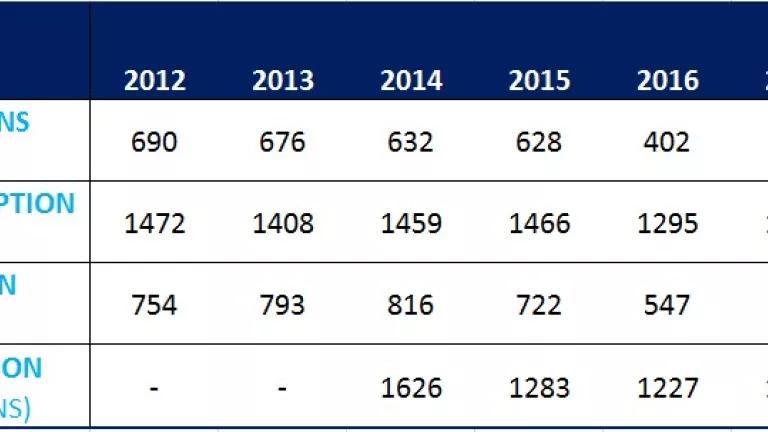The Heartland Memo: Myths About Carbon “Fertilization”

The Heartland Institute is trying to resuscitate a zombie myth that carbon pollution is good for humanity.
One of the main themes of the anti-science Heartland memo I wrote about last week is that carbon dioxide (CO2) is greening the world and increasing crop yields. This may seem like a comforting thought, but it’s deeply misguided and damaging to efforts to address global hunger.
Here are some reasons to be wary of the so-called benefits of carbon dioxide.
Warming is more harmful than carbon dioxide is helpful
Large swaths of Earth are indeed greening as we pump carbon pollution into the air and the planet warms. By one estimate, carbon dioxide, warming, and other factors increased plant growth in up to half of the world’s vegetated area from 1982 to 2009.
But carbon dioxide’s growth-boosting effect has limits. For instance, one study of soybean production in the United States found that carbon dioxide increased yield by an average of 22 percent during wet growing seasons, but only 1 percent during dry growing seasons. And as the researchers put it: “Lethal drought will cause total crop failure regardless of whether plants grow at ambient CO2 or elevated CO2.”
Most crops also have an upper temperature limit beyond which growth slows or stops. The Heartland memo presented the graph on the right as evidence of the benefits of carbon dioxide and warming—misrepresenting the original source in the process. The red line is the average response of corn growth to temperature. Unless you disregard the right half of that line, you can see that corn growth slows above about 86 degrees Fahrenheit, and drops off above 92 degrees.
Corn is just one of many crops that suffer above an 86-degree threshold. In fact, an examination of major grain crops projects that every 1 degree Celsius of warming (1.8 degrees Fahrenheit) could lower global rice and soybean yields by an average of 3 percent, wheat yields by 6 percent, and corn yields by more than 7 percent.
The changes in rainfall patterns and extreme weather that come along with a warming world also increase crop losses and contribute to the land degradation that puts many millions of people at risk of starvation.

Elevated carbon dioxide reduces food quality
Another wrinkle is that crops grown under high carbon dioxide can be less nutritious. Several recent studies find that high-carbon conditions decrease iron in legumes, protein in rice and potatoes, zinc in wheat, and multiple critical nutrients in spinach and lettuce.
Scientists aren’t sure yet why this nutrient loss happens, and suspect the answer differs by plant species. This outstanding question, however, doesn’t change the fact that staple foods could soon be less good for us.
Carbon dioxide isn’t the only climate pollutant
Carbon dioxide is the main driver of observed increases in global temperature, but it’s not the only one emitted by human activities. And since most of the other climate-warmers don’t stimulate plant growth, they don’t offset any of the pain of higher temperatures and drought like carbon dioxide does. Methane is also a precursor to ground-level ozone pollution, which is highly damaging to plants. One recent estimate suggests methane emissions may have already cut global crop yield by about 5 percent since the 1850s.

One of the scariest things about Heartland’s zombie myth is that it sounds so darn … upbeat. Plants need carbon dioxide to grow so more carbon dioxide must be good, right? Wrong. Carbon dioxide and other climate-wrecking pollutants are warming the planet to stressful new highs, and many of the crops on which we depend are suffering as a result. In just a few decades, climate change could wipe out recent increases in productivity made by America’s agricultural sector. That kind of yield loss, combined with lower food quality, is a recipe for even more food shortages and nutrient deficiencies as the global population grows. It’s time to slay the “greening world” zombie by cutting carbon pollution and being better stewards of our agricultural lands.




